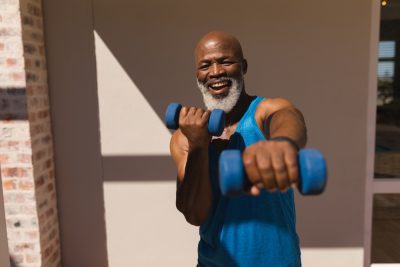Athletes and fitness enthusiasts are abandoning traditional warmup routines in favor of targeted breathing exercises that prepare the body more effectively than jogging in place or static stretching. This shift represents a fundamental change in how we understand pre-exercise preparation, moving from mechanical movements to physiological optimization that addresses the nervous system first.
Elite trainers and sports scientists now recognize that breathing patterns directly influence athletic performance, injury prevention, and recovery in ways that conventional warmups simply can’t match. The most successful athletes are those who master their breath before they master their movements.
Breathing directly activates your performance nervous system
Traditional warmups focus on increasing heart rate and muscle temperature, but breathing drills target the autonomic nervous system that controls all physiological functions during exercise. Proper breathing techniques can shift your body from a stressed, shallow-breathing state into an optimal performance state within minutes.
Controlled breathing activates the parasympathetic nervous system, which promotes recovery and preparation, while also priming the sympathetic system for athletic performance. This dual activation creates an ideal physiological state where your body is both relaxed and ready for intense activity.
Breathing exercises also optimize oxygen delivery and carbon dioxide removal more effectively than conventional warmups. When you train your breathing patterns before exercise, you’re essentially teaching your respiratory system to work more efficiently during the workout that follows.
Traditional warmups miss the respiratory foundation
Most conventional warmups ignore the fact that breathing dysfunction is one of the primary limiters of athletic performance. If you start your workout with compromised breathing patterns, no amount of muscle warmup can compensate for inefficient oxygen delivery and waste removal.
Static stretching, long considered essential for injury prevention, has been shown to potentially decrease power output and athletic performance when performed before exercise. Breathing drills, on the other hand, can improve both flexibility and power simultaneously by optimizing nervous system function.
Dynamic warmups are better than static stretching, but they still don’t address the foundational breathing patterns that influence every movement you make during exercise. Athletes who skip breathing preparation often find themselves fighting their own respiratory system throughout their workout.
Specific breathing patterns enhance different types of performance
Power athletes benefit from breathing techniques that activate the sympathetic nervous system and increase arousal levels, such as rapid, forceful breathing patterns that elevate heart rate and mental alertness. These techniques can replace traditional high-intensity warmup activities while providing better preparation for explosive movements.
Endurance athletes need breathing drills that optimize oxygen utilization and train the respiratory muscles for sustained activity. Techniques like box breathing or extended exhale patterns can improve oxygen efficiency and prepare the diaphragm for prolonged work.
Strength training requires breathing patterns that support core stability and intra-abdominal pressure. Breathing drills that focus on diaphragmatic control and breath-holding can improve lifting technique and prevent injury more effectively than traditional core warmup exercises.
Recovery and performance preparation happen simultaneously
Breathing drills can address residual tension and stress from daily life while simultaneously preparing your body for exercise. This dual function makes breathing warmups more time-efficient than traditional routines that require separate relaxation and activation phases.
Many athletes carry stress and tension into their workouts, which compromises performance and increases injury risk. Breathing exercises can reset your nervous system and clear mental clutter while also optimizing your physiology for the upcoming training session.
The meditation-like quality of focused breathing also improves mental preparation and concentration, giving athletes better mind-muscle connection and spatial awareness during their workout. This mental preparation often proves more valuable than physical warmup activities.
Implementation requires progressive skill development
Start with simple breathing patterns like 4-4-4 breathing (inhale for 4 counts, hold for 4, exhale for 4) to establish baseline breathing control before progressing to more complex techniques. Mastering basic patterns is essential before attempting advanced breathing drills that can be counterproductive if performed incorrectly.
Match your breathing warmup to your workout intensity and type. High-intensity training sessions benefit from more activating breathing patterns, while recovery workouts or yoga sessions require calming, parasympathetic-focused breathing techniques.
Practice breathing drills consistently, even on non-workout days, to develop the respiratory control and awareness needed to make them effective as warmup tools. Like any skill, breathing optimization requires regular practice to become automatic and beneficial.
Monitor how different breathing patterns affect your workout performance, energy levels, and recovery. Individual responses to breathing techniques vary significantly, so finding your optimal pre-exercise breathing routine requires experimentation and attention to your body’s feedback.
















